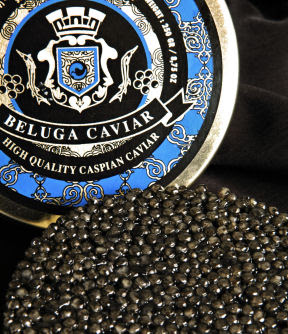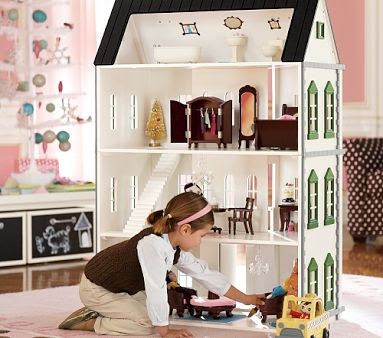Luxury in Latin: ‘Luxuria, the excesses of life’
Defining Luxury: What is luxury?
Luxury can be something that is an indulgence rather than a necessity
Example - Beluga caviar is the most expensive type of caviar, with present market prices ranging from $7,000 to $10,000 per 1 kg (2.2 lb)
Lavishness: the quality possessed by something that is excessively expensive
Example - Vivienne Westwood's Gold Label champagne silk wedding gown with built-in corset. As seen in Sex and the City Movie. This dress is lavish because of the details, fabric and craftsmanship.
Wealth as evidenced by sumptuous living
- The Burj Al Arab; it is the fourth tallest hotel in the world. The Burj Al Arab stands on an artificial island called Jumeirah beach, and is connected to the mainland by a private curving bridge. It is an iconic structure whose shape mimics the sail of a ship.
Coco Chanel once said: “Luxury is the necessity that begins where necessity ends”
This quote often makes me wonder about where exactly necessity begins and where does it end. Are we fueled by the desire for excess? Is good enough for today, not good enough for tomorrow?
The Basics: Luxury Brand Management
Who are typical luxury consumers?
There are no typical luxury clients. Luxury consumers can fall under any of the following categories:
1) Millennium money: those who made a fortune around the turn of the century, internet business, sports stars and celebrities.
2) Old Money – Traditional category – those who inherited their wealth. Manage or inherit
a family business
3) New Money – Those who have made a fortune themselves. They have worked hard and know the value of money
When it comes to luxury, money is not enough – you have to know how to spend it rather than simply having spending power.
– Adapted from: Chevalier M. and Mazzalovo G., Luxury Brand Management, A world of Privilege. 2008. Published by: John Wiley & Sons Ltd
What does luxury look like?
Examples:
A 5year old girl may consider this doll house to be quite luxurious
If one is technology savvy they may consider owning an IPhone to be a luxury
Some consider sports cars, such as this Jaguar CX-75 to be luxurious
Some may consider going to the Exuma Island in the Bahamas to be the ultimate in luxury
Luxury can be: exclusive, expensive, extraordinary, special materials, high end packaging, the personal experience, scarcity, private view, classic, unique, in the know, prestigious, and instantly recognizable
When it comes to luxury, money is not enough – you have to know how to spend it rather than simply having spending power.
Luxury Brands: Management
Luxury brands are managed differently as appose to mass brands because of following characteristics of the industry:
- - High Price: In the luxury industry products and services are of high price.
- - High Cost: Production cost is higher than in mass markets.
- - Craftsmanship: Attention to detail and craftsmanship is extremely valued and looked into with great care and caution.
- - Limited Distribution: Luxury brands don't want everyone to own the product, and for this reason they distribute only to a number of select places.
- - Low Promotional Activities: They like to keep things private and behind closed doors. The preference is to promote the brand in a way that does not dilute the brand image. Exclusivity is key.
- - Advertising with no sophisticated copy strategy: The advertising is done without a sophisticated copy strategy:
(Reference Chevalier M, and Mazzalovo G, Wiley 2008)
The management of luxury brands is therefore completely different from what is done in mass product companies.
Luxury Brands: Communication
Luxury brands communicate though experience, in form and in essence:
- Experience: stores, press, fashion shows, private events, online
In essence: In our myths, and dreams
Every luxury brand must have it’s own shorthand or code.
- The name is a vital asset and it should be easy to remember. Example: Chanel, Bentley, Tiffany etc.
- The figure of the brand’s creator: the effigy will be found in its’ shops and communications
- The logotypes generally short and very visual, such as Chanels's double C, DG, LV etc. A repeated visual motif.
- A visual symbol that accompanies the logotype signature, eg: Aston Martin’s wings
- A brand colour (Tiffany’s blue, Veuve Clicquot’s orange)
- Material: Through the material they use. For example, A favourite material for Hermes is silk or for Prada it’s ostrich leather.
- Cut of detail: Through an obsession that turns to beauty. The cut of detail in close ups of seams like the lock details at Louis Vuitton.
- The constant hymns to the manual work, to the excellence of the artisans who have contributed to each object, to the know how.
- A way of doing things that is typical of the brand: whether it is the ‘Chanel style’ or the typical driving experience at the wheel of a BMW.
How do they typically communicate?
Hublot: Two years ago the Hublot Company was honored to receive the 'Prix du Design' award for its Big Bang watch creation during the Grand Prix de l'Horlogerie de Geneve. The designers of the Hublot Big Bang watch were bold enough to make their dream come true and face the challenge of creating the watch, having incorporated all their ingenuity, creativity, savoir-faire and a moment of folly. They were initially rewarded when they witnessed the supreme beauty of the completed timepiece. The creators of the Hublot watch were once again rewarded during the Grand Prix de l'Horlogerie de Geneve.
2. Exclusive private shows:
Boodles Jewellers at Harrods recently hosted a special event where you could try on beautiful diamonds for the day whilst also being shown the latest range and getting treated with lunch and being pampered.
How do they communicate these emotions:
Design is critical to all the touch points of a luxury brand.
How do resorts and hotels like these communicate luxury?
Luxury brands: semiotician
Semiotician: The theory and study of signs and symbols, especially as elements of language or other systems of communication, and comprising semantics, syntactics, and pragmatics.
Luxury brands use alot of signs and symbols as language and in communication inorder to get the message across to the target consumer. These brands often use a semiotician to help with this process.
(Reference: Module Slides, Class Lecture: Serena Gossain and John Harrison)
As someone managing the brand it is important to be able to understand the brand on a deeper level, this can be done by looking into the following:
1) Cognitive sciences- This is a study of human intelligence and of the symbol-processing nature of cognition. It covers physical and sensory, spatial, timing, positional, normative, relational etc.
2) Brand meaning: It is vital to understand the meaning behind the brand before this can be communicated to the target audience. Therefore someone who deeply understands these cognitive codes and meanings in relation to the brand, can help support a brand director.
These two areas require a semiotician. In Chevalier’s and Mazzalovo’s book they suggest that a semiotician should feed into a brand director and head of operations.
Luxury brands: The Message:
Each Luxury brand offers a self-concept to its followers, the brand communicates this concept through the style and persona the brand excludes. This message is what the consumer takes with them, and makes the consumers aspire to the brand:
- Chanel: ‘I am exceptional because I wear Chanel, elegant, classic and modern’
In class assignment:
Question 1. Given the reading, are there any other examples you can provide where design has been given the highest priority?
Answer 1. Yes I could immediately think of four examples where design had been given the highest priority
Answer 1. Yes I could immediately think of four examples where design had been given the highest priority
Lady Dior handbags
Chanel
Other examples where design has been the highest priority include: Apple, Chanel, Tiffany, Hermes, Narciso Rodriguez, Italian cars, Sunglasses, Louis Vuitton Handbags, Vertu phones, Louboutin shoes, Lady Dior handbag, Bentley cars, Bang and Olufsen, Oscar de la Renta dresses, MCM bags YSL shoes.
When it comes to luxury brands, design is one of the most important elements.
Question 2. Can you think of an example of where the design ‘code’ may have actually hindered or damaged a particular luxury brand?
Answer 2.Yes, I could think of a few luxury brands where the design code may have hindered or damaged the brand.
- - Burberry: They got linked to the 'chav' market and started to be seen as a low quality brand because everyone was wearing it. The brand lost quite alot of sales and clients because of this association.
Answer 2.Yes, I could think of a few luxury brands where the design code may have hindered or damaged the brand.
- - Burberry: They got linked to the 'chav' market and started to be seen as a low quality brand because everyone was wearing it. The brand lost quite alot of sales and clients because of this association.
- Louis Vuitton: Louis Vuitton lost out because of the design code being copied by people making counterfeit products and selling them as the real thing.
Consumer "Is this fake?"
Store "No! "Its original."
Counterfeit products are a major problem in the luxury market because they destroy the image of the brand. These products are sold at prices lower than the original product. The better the copy is, the higher the price is.
Store "No! "Its original."
Counterfeit products are a major problem in the luxury market because they destroy the image of the brand. These products are sold at prices lower than the original product. The better the copy is, the higher the price is.
Question 3. What do you think are the most important factors when designing a luxury brand (service or product)?
Answer 3. According to me the most important factors when designing a luxury brand are as follows:
- Quality
(Ritz, London)
Answer 3. According to me the most important factors when designing a luxury brand are as follows:
- Quality
(Ritz, London)
- History or heritage
(Coco Chanel)
- Symbols
(Aston Martin)
(Coco Chanel)
- Symbols
(Aston Martin)
I believe that these were the three most important factors, however the list also includes: Brand DNA, consistency, values that people can identify themselves within the brand, quality, recognition, symbols, packaging, vision, uniqueness, history and heritage, aesthetic value, the overall brand feeling.
The last assignment was trying to feel the brand identities and brand values of some different brands.
The brands given to us were:
Hermes: Elegant, classy, posh, sophisticated, old money, french, orange, waiting list, status conscious, appreciate quality, heritage
Burberry: Classic, style conscious, minimalistic, understated
Jimmy Choo: Sexy, fashion forward, feminine, young, new money, confident and seductive
This sums up the first class. I felt that this class was extremely enjoyable and I did get to learn a lot from it. The start of the class did give me a few ideas for my individual assignment as well. I do hope I manage to come up with something as grad as I have planned.
-----
Reference:
Module Slides, Class Lecture: Serena Gossain and John Harrison
Chevalier, Micheal. and Mazzalovo, Gerald., 2008. Luxury Brand Management: A World of Privilege. Singapore: John Wiley and Sons.








































No comments:
Post a Comment